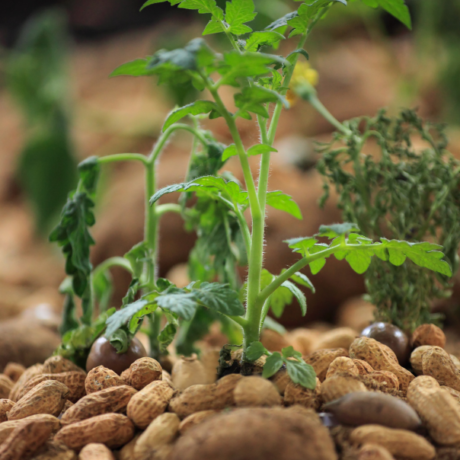Home / Groundnut (Peanut)
Home /Groundnut (Peanut)

Groundnut, also known as Peanut, is a legume widely consumed across the globe as both a snack and an ingredient. It is one of the world’s important oilseed crops. Its seeds are a rich sources of edible oil (43-55%) and protein (25-28%). China and India are the major producers of groundnuts, followed by Sub-Saharan African countries and Central South America.
Groundnuts contain five important nutrients, namely food energy, protein, phosphorus, thiamin, and niacin. It maintains and repairs body tissues. Groundnuts contain 13 different vitamins (including Vitamin A, B, C, and E) along with 26 essential trace minerals, including calcium and iron.
Naturally rich in protein, healthy fats, vitamins, and minerals, groundnuts are a versatile crop with applications ranging from direct consumption to processed food and industrial uses. Their nutty flavor and high nutritional value make them one of the most popular and traded agricultural products worldwide.
Key Applications (Food Use):
Key Applications (Industrial Use):
Eating freshly roasted groundnuts with jaggery and goat's milk is very nutritious for growing children, pregnant women, and nursing mothers. It builds a resistance against all infections, such as Hepatitis and tuberculosis.
Groundnuts have good dietary fiber content, so they are very good for digestion.
Groundnuts can be eaten raw after roasting or processed into peanut butter.
Groundnut oil can be extracted from the nuts and has a variety of uses, including use as cooking oil or in soaps, or as lubricants.


Sand & Silica 245% or 50%
Profat 1.5% Max.
Oil Content 0.5%
Moisture 10% Max.
Fiber 12% Max.
Aflaroxin Negative
Multiwall Paper Bags: 50 lb / 22.68 kg or 25 kg
HDPE / PP Bags: 55.12 lb / 25 kg or 110.23 lb / 50 kg
Jute Bags: 110.23 lb / 50 kg
24 months from production date
Store in cool, dry, hygienic conditions
